Street Trees & The Virtues of FBCs
Though tempted, I won’t write a soliloquy today on the many virtues of street trees. Others have done so better than I, including Allan Jacobs, who wrote in the book Great Streets, “Given a limited budget, the most effective expenditure of funds to improve a street would probably be on trees.”
Some of my colleagues have written about the inherent economic value of trees, parsing all manner of numbers and outcomes. Those are interesting intellectually, but they are also frankly numbers that can be gamed depending on the person running them. For me it’s more practical. Trees provide shade. They make a street more beautiful. Both of those things encourage me to be outside more, to walk more, to ride a bike more. It’s really quite that simple.
Here is a recent blog on the subject: What Trees Mean to Communities.
Two Things to Remember
If there were only two things I’d like you to remember from this piece it’s that:
- Street Trees are really important to walkability
- What Gets Coded, Gets Built
The details matter when it comes to creating desirable places. Savannah can arguably afford more mistakes than other places, simply because of the abundance of quality streets and public spaces it possesses. It will still attract people to visit, live and work because of its physical qualities. But as the city continues to experience rejuvenation, it must take great care to keep enhancing its great assets. And clearly its primary asset is the beautiful, walkable quality of its neighborhoods.
Allow me an analogy: A restaurant may have a loyal base of existing customers, but if it doesn’t take care of new people who come in the door, it will eventually experience stagnation and decline. It’s wise to continue looking for ways to generate new revenue, and not just rely on the “regulars”. Cities are no different. In the case of Savannah in particular, it must continue to enhance the quality of its streets and neighborhoods in places beyond the Historic District, or it will miss a valuable window of opportunity to expand its revenue (happy citizens).
Which takes me to today’s story: East 33rd Street. This particular street has a series of buildings on its south side that were built within the last five years. The street is unusual in that it doesn’t have a lane behind the buildings, due to a shorter-than-normal block configuration. And, it even has a slight curve as it approaches Habersham – all outside the norm for this part of Savannah.
What is this street missing?
Well, in case you haven’t been paying attention to the focus of this piece, it’s street trees. As this block redeveloped, clearly there were no requirements placed on property owners to plant shade trees. The results:
- Buildings and porches don’t get shaded
- The sidewalk doesn’t get shaded
- Parked cars don’t get shaded
Most importantly, because of these factors, the lack of street trees makes for a less-desirable street and therefore fewer people will walk or bike on it, let alone choose to live on it if they have options. Shade in the summer is a desirable feature in most of our places, but it’s critical in the hot, humid Southeast.
How did this happen?
To put it simply, the trees are not specifically required. In the case of Savannah, the City has a Tree Ordinance that governs its urban trees – not just provisions but removal. It does typically require street trees, but wide exceptions are given for a variety of exceptional situations. My educated guess: since this block is especially shallow, and the buildings take up virtually the entire lot, the City didn’t feel there was room for the trees, and gave the builders an exception. Of course, if anyone reading this knows the case for certain, please do comment.
How would this be prevented?
This is where the virtues of form-based codes (FBC’s) come in. FBC’s by their nature are site-specific. That is, they look at each block and street, and specifically write and draw what can be built, and what improvements are to be made. Exceptional situations are designed for, in advance, so that key elements like street trees can’t be left out. And, for FBC’s, the key focus is on what we call the public realm – that space that we experience when walking, biking or driving down the street. It includes the front of the buildings themselves, the landscaping in front, the sidewalk space and the streets.
What happened in this case is often what happens with more generically-written ordinances, that define overall rules and processes, but allow for waivers in many situations. Since those aren’t tied to an actual map, more waivers happen than what may originally have been intended.
Bottom line: If it doesn’t get coded, it doesn’t get done. This is the era we live in.
The street looks really tight – is there space for trees?
Let’s look at a few examples of what could have been done.
- The same street, one block west – space was allotted for trees and a narrower sidewalk
- Also the same street, one block west – the larger tree narrows the sidewalk, but still provides shade
- A mature tree with sidewalk space around it, albeit a bit narrow
- Refined version of slim strip & sidewalk
- In this case, the tree and landscaping was carved out of the street. due to site restraints
- Using a curb extension (aka bulb-out) to create space for mature tree at the corner
Every solution has its trade-offs, but it’s clear that if having trees along the street was a priority, it could have been accomplished. Shade trees along a street are one of the easiest improvements that can be made – they are inexpensive, have immediate benefit, and only get better with time. And yet, it’s amazing just how often we neglect this simple, critical feature. In some cities, you can simply take matters in your own hands, and plant/nurture them without a need for approvals. In most, however, you must work with a public agency. Here’s hoping for common sense, fewer excuses, and more action when it comes to getting trees in the ground.

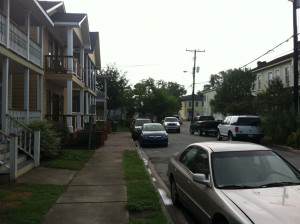
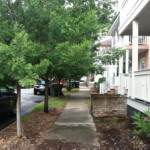
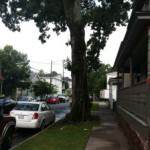
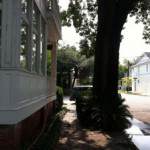
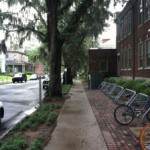
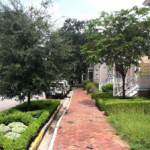

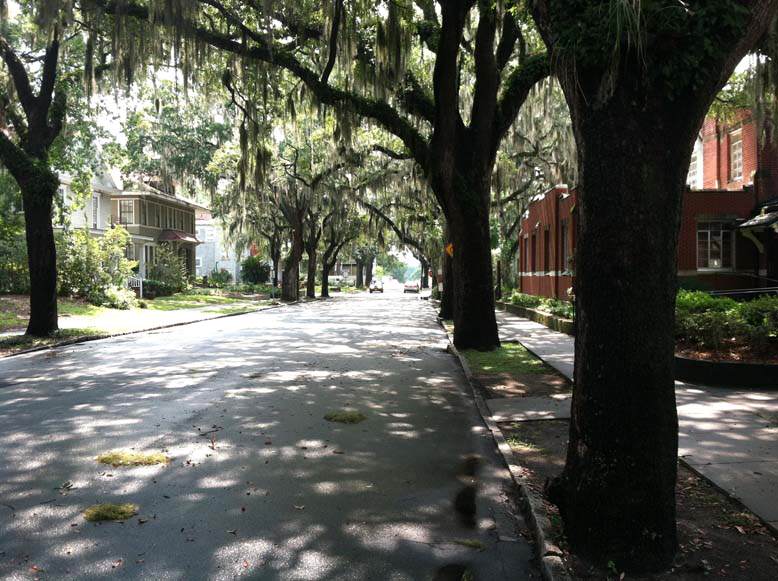














hello i am one of your website’s user. Thanks for sharing informations. i need articles or book about Form based codes but most of them are not accessable accessible or they have been mentioned just in 1 page. i really need teorical or some experiences in this field could you help me?